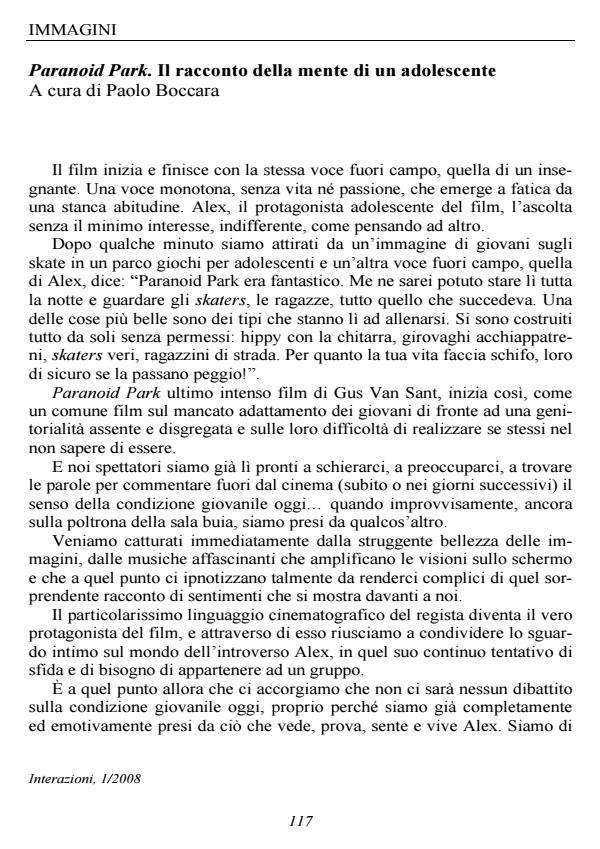Paranoid Park. Il racconto della mente di un adolescente
Titolo Rivista INTERAZIONI
Autori/Curatori Fiorella Ceppi, Gianfranco Cimafonte
Anno di pubblicazione 2009 Fascicolo 2008/1
Lingua Italiano Numero pagine 2 P. 117-118 Dimensione file 253 KB
DOI 10.3280/INT2008-001011
Il DOI è il codice a barre della proprietà intellettuale: per saperne di più
clicca qui
Qui sotto puoi vedere in anteprima la prima pagina di questo articolo.
Se questo articolo ti interessa, lo puoi acquistare (e scaricare in formato pdf) seguendo le facili indicazioni per acquistare il download credit. Acquista Download Credits per scaricare questo Articolo in formato PDF

FrancoAngeli è membro della Publishers International Linking Association, Inc (PILA)associazione indipendente e non profit per facilitare (attraverso i servizi tecnologici implementati da CrossRef.org) l’accesso degli studiosi ai contenuti digitali nelle pubblicazioni professionali e scientifiche
The multi family group as a space of meta reflection - Authors describe the process which led to the activation of a multi-family group within a Residential Therapeutic Community for young patients with personality disorder, especially in the borderline spectrum. In the perspective of a transforming intervention which is aimed at fostering mentalization processes, authors highlight that a multi-family group works as a safe enlarged container which enables families to question designations and interactive stiff modalities as well as to stimulate new ways of thinking. Moreover, they believe a multi-familiar group represents a meta-context which allows, on the one hand, to integrate and enrich those elements emerging in different therapeutic community contexts (individual, familiar, group), on the other, it favours the attuning of theoretical frameworks which are different, but which share the idea of focusing on relationships and contexts, rather then on the nature of the disease. Then, authors explore feasible articulations with the theorizations made by García Badaracco of the systemic-familiar thought of Bowen (Differentiation of Self) and Bateson (Ecology of Mind) and the attachment theory, with particular reference to the researches which link the pattern of disorganized attachment and the deficit of mentalization functions, to the borderline disorder. Finally, a clinical case has been reported which clearly describes the multifamily group ability to work as an "amplified mind" allowing a person to think together what he or she could not think on her own.;
Fiorella Ceppi, Gianfranco Cimafonte, Paranoid Park. Il racconto della mente di un adolescente in "INTERAZIONI" 1/2008, pp 117-118, DOI: 10.3280/INT2008-001011